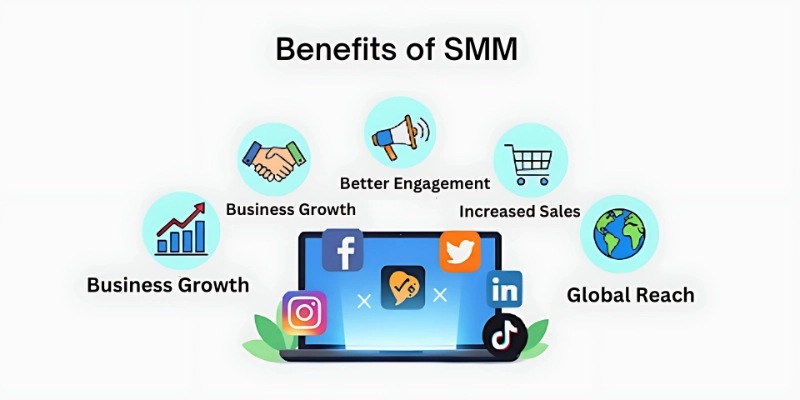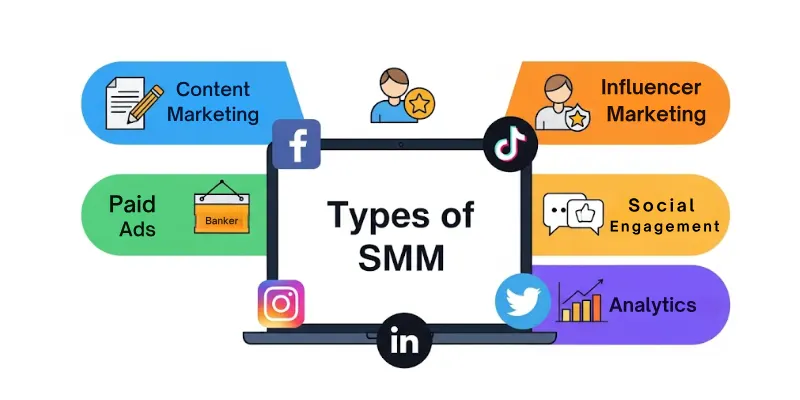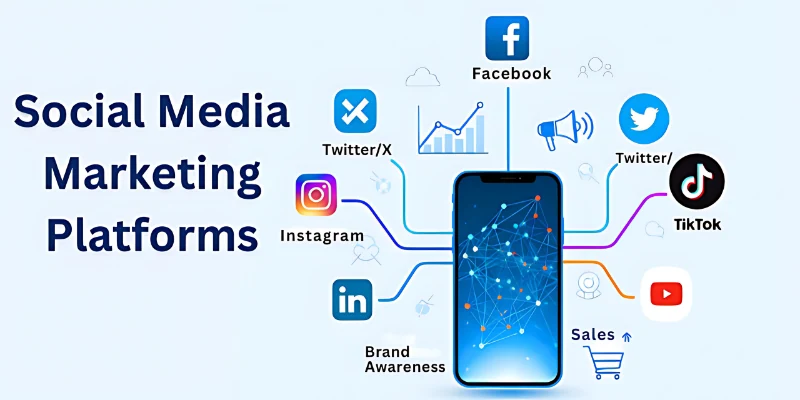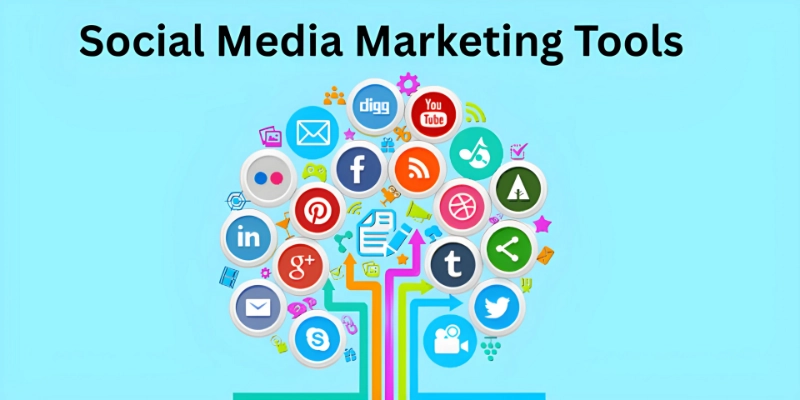SMM Tips for Beginners: Start Social Media Marketing the Right Way
Published: 30 Aug 2025
Every day, millions of people open apps like Facebook, Instagram, TikTok, and YouTube. They watch the video, browse through the post, and like pictures. But have you ever thought about why you also see ads or posts from brands? This is called Social Media Marketing (SMM). The use of SMM (social media platforms) is to share information, contact people, and market products or services.
In today’s world, where almost everyone uses social media, SMM has become one of the most powerful methods for companies and individuals to reach the public.
📌 What is SMM?
SMM stands for Social Media Marketing. This simply means using apps for social media to bring or market something to the market. Instead of spending money on TV, radio, or newspapers, companies are now focusing on platforms such as Instagram, Ticketkok, Twitter (X), YouTube, and LinkedIn.
SMM allows businesses:
- Share the update quickly.
- Contact people directly.
- Build trust through regular positions and answers.
Unlike old-style marketing, SMM is two-way communication. This means that companies can talk to customers and customers can respond immediately.
Benefits of SMM
Here are some key benefits of Social Media Marketing (SMM).

1. Brand awareness 🌟
Social media keeps your brand visible and memorable to the right audience.
- Post regularly so that your brand appears in people’s feeds.
- Repeat your logo, colors, and tagline to make a strong memory.
- Even non-factories begin to recognize your name over time.
- Staying in the top mind increases the chance of choosing later.
- Shares and tags push your brand into new audiences for free.
- Well-known brands feel safe and more reliable to customers.
2. Cost effects 💰
SMM is one of the cheapest ways to market your business.
- Making a page on social platforms is free.
- A very low budget is required to post pictures, wheels, and stories.
- Paid ads are cheaper than TV, print, or radio.
- Even small budgets can reach thousands of people.
- Better return just by targeting the right audience.
- It is easy to test and improve ads without wasting money.
3. Direct communication 💬
This allows quick interaction between your brand and customers.
- Customers can comment or DM immediately.
- Quick answers create trust and take care of you.
- Collect direct feedback and ideas from the audience.
- A favorable tone makes your brand feel human and acceptable.
- Handle complaints early before you grow.
- Encourage questions and answers, as well as community chats, to keep people engaged.
4. Traffic and Sales 🛒
Social platforms drive visitors to your site and market conversions.
- Post and add links to BIOS to send visitors to your site.
- Use ads targeted to send people to product pages.
- Promote and provide clicks and purchase intention.
- Track it to see which posts provide sales.
- Retain visitors who viewed your page but did not make a purchase.
- Turn on the followers who are paying customers.
5. Customer loyalty 🤝
Constant commitment creates long-term beliefs and strong conditions.
- Responding to comments and messages provides strong bonds.
- Share useful tips and values, not just publicity.
- Provide prizes or exclusion to repeat customers.
- Customize messages using name and history.
- Faithful fans often give you advice on friends and family.
- Strong loyalty reduces grinder and keeps revenues stable.
6. Global access 🌍
With social media, your business can reach people around the world at any time.
- Now people all over the world without opening new stores.
- Sell limits with online directories and payments.
- Your content appears 24/7 in the time area.
- Use many languages to expand rapidly.
- Find the niche market anywhere in the world.
- Compete with large brands using smart targeting, not large budgets.
🌐 Types of Social Media Marketing (SMM)
Remember, before we start: Social media marketing (SMM) is about using apps such as Facebook, Instagram, Ticketkok, and YouTube to tell people about their business, product, or service.

Here are the main types.
1. 📢 Content Marketing
Content marketing is sharing informative posts, videos, or blogs to educate people and gain their trust.
- Post tips, tricks, or advice that are related to your product.
- Use simple images or videos so people find them entertaining.
- Post blogs or articles that answer small questions.
- Create “how-to” guides that impart new knowledge.
- Post stories that connect to people’s emotions.
- Post updates about your company or products.
- Always provide value so people return for more.
2. 📸 Influencer Marketing
Influencer marketing involves collaborating with popular individuals online who can speak of your brand.
- Select influencers appropriate to your type of product.
- Use small influencers (micro-influencers) for high trust.
- Request them to create genuine reviews of your products.
- Utilize their followers to target new individuals.
- Provide them with discount coupons to share among followers.
- Request them to share photos, videos, or reels utilizing your product.
- Form long-term collaborations for maximum output
3. 🎯 Paid Advertising
Paid ads involve paying social media to display your ads in front of more people.
- Select the audience you want to target (age, place, interests).
- Make visually appealing images or videos.
- Keep your ad text brief and concise.
- Try various ads and see what performs best.
- Have a budget to limit how much you spend.
- Monitor results to determine if the ads generate sales.
- Optimize your ads if they are not performing optimally.
4. 💬 Social Media Engagement
Engagement is sharing and chatting with your followers.
- Respond promptly to comments and messages.
- Like and share your followers’ posts occasionally.
- Conduct polls or quizzes to boost activity.
- Post fun questions to get conversations going.
- Thank loyal followers.
- Employ hashtags to participate in trending content.
- Celebrate holidays or occasions with special posts.
5. 🎥 Video Marketing
Video marketing is the use of short or long videos to market your brand.
- Create short, entertaining reels or TikToks.
- Post tutorials on how to use your product.
- Post customer reviews in video form.
- Go live and communicate with followers in real-time.
- Post behind-the-scenes videos of your team.
- Add captions so that everyone can get your video.
- Keep videos simple, clear, and fun.
6. 🛒 Social Commerce
Social commerce refers to the direct sale of products via social media sites.
- Add a shop button on Instagram or Facebook.
- Display your products using clear photos.
- Write concise product descriptions.
- Use “buy now” links to make it easy to shop.
- Offer discounts or promotions.
- Publish customer testimonials to establish trust.
- Make your checkout process fast and secure.
Platform for SMM 📱
Social media marketing is most effective when selecting the right platform to achieve your goals. Each platform consists of unique strengths and types of audience.

- Facebook – Great to reach a detailed audience, run advertising, and create a community through groups and pages.
- Instagram – best for visual materials such as images, reels, and stories; Ideal for fashion, lifestyle, food, and beauty brands.
- Twitter (X) is set for updates of the World Period, related to quick interaction with trending topics and followers.
- YouTube-long-time videos, training programs, and product reviews are perfect for building a strong customer base.
- LinkedIn-Pessever is designed for networks, B2B marketing, and shared industry-related materials.
- TIKTOK – Excellent for short, creative, and entertaining videos; Helps brands get viral quickly.
- Pinterest – big, especially lifestyle, DIY, food, and design inspiration for the top audience.
Tools for Social Media Marketing ⚡
When it comes to Social Media Marketing (SMM), having the right tools can save you time, keep your content consistent, and improve overall performance. Here are some essential tools every marketer should use:

- To save time and maintain consistency, plan and schedule posts using tools like Hootsuite or Buffer.
- Instead of logging in separately, manage multiple platforms from a single dashboard.
- Receive post reminders (through Instagram Stories, for example) to make sure you don’t miss important dates or sales.
- Use tools such as Google Analytics 4 or Meta Business Suite to monitor analytics and insights.
- To determine what works, track engagement metrics such as likes, comments, shares, clicks, and conversions.
- Discover the demographics of your audience and modify your approach for a higher return on investment.
- Create visually appealing content with pre-made templates from Canva or Adobe Express.
- Create branded visuals quickly by using Free Stock & Effects (pictures, icons, and animations).
- Use chatbots like ManyChat to automate tasks and responses to reduce human labor.
- Use AI tools (Sprout Social, for example) to find trending hashtags, ideas, and ad personalization.
🌐 Future of Social Media Marketing
The future of SMM is going to develop exciting and rapidly:
- AI and automation save time by posting, replying, and using chatbots.
- With audience behavior analysis, AI tools create captions, blogs, and ads, and improve targeting.
- Social Commerce lets customers shop on Instagram and TikTok with little effort.
- In-App Payments make buying fast, safe, and easy without leaving the app.
- Live Shopping & Reviews increase small business sales, trust, and engagement.
- Short videos (Reels, Shorts, TikTok) rule trends, challenges, and virality.
- For visibility, platform algorithms favor short videos with music, effects, and filters.
- Personalization improves email campaigns, product recommendations, and ads.
- Brands can improve ROI with AI predictions of customer needs.
- AR/VR Marketing adds virtual tours, interactive ads, and unique experiences to shopping.
Conclusion
Social media marketing (SMM) has become the backbone of modern digital development, which helps brands directly contact millions of users on platforms. From creating strong brand awareness to running website traffic and conversions, SMM creates endless possibilities for all sizes of companies. Creative materials such as wheels, posts, and stories keep the audience busy, while the ads are paid to ensure accurate targeting and better results. With AI, automation, and individual campaigns, SMM becomes smarter and more efficient. Short shape video, The Rise of Social Commerce, VR, and AR promise an exciting future for Vipanak. In short, SMM is not just a passing trend-this is the key to long-term digital success.
🔹 FAQs
Here are some important FAQs related to SMM. So, let’s get started.
SMM (Social Media Marketing) is the use of social platforms such as Facebook, Instagram, and TikTok to market products, services, or brands.
This helps companies to increase brand awareness, get in touch with customers, drive website traffic, and promote sales.
Popular platforms include Facebook, Instagram, TikTok, LinkedIn, Twitter (X), and YouTube – depending on the audience.
SMM produces quick results and commitment, while SEO creates visibility over a long time. Both do their best work when combined.
Costs vary – some companies use free organic strategies, while paid ads may vary from a few dollars to thousands of month.
It provides cheap marketing, connects to local audiences, creates a self, and generates potential customers without a large budget.
AI-operated automation, social trading, short-form video, privatization, and VR/AR experiences are shaping the future of SMM.
SMM success is measured through engagement metrics like likes, shares, comments, and follower growth. Businesses also track website clicks, lead generation, and conversions from social platforms. These insights show what content works best and how campaigns impact sales.
Yes, organic social media posts can grow brand awareness, build trust, and create loyal communities. It may take more time than paid ads, but consistent posting and interaction can still be effective. Many small businesses start with organic strategies before moving to paid campaigns.
Strong creativity helps in making engaging posts that stand out. Analytical skills are needed to track performance and improve strategies. Basic design or video editing skills also make content more appealing to audiences.

- Be Respectful
- Stay Relevant
- Stay Positive
- True Feedback
- Encourage Discussion
- Avoid Spamming
- No Fake News
- Don't Copy-Paste
- No Personal Attacks

- Be Respectful
- Stay Relevant
- Stay Positive
- True Feedback
- Encourage Discussion
- Avoid Spamming
- No Fake News
- Don't Copy-Paste
- No Personal Attacks





